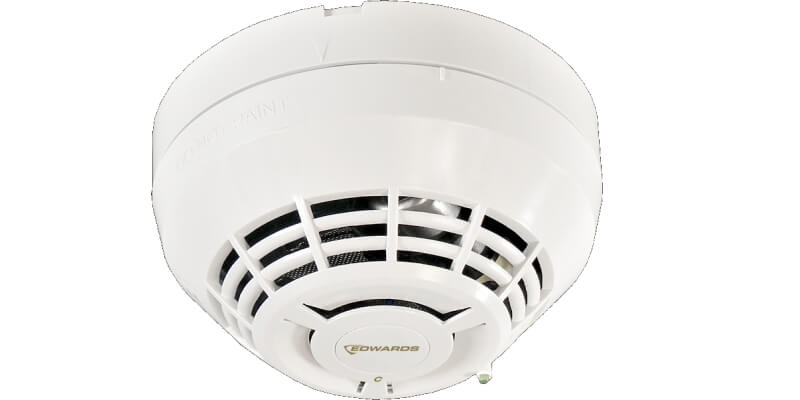Changes to fire safety legislation in Scotland have led to many residents inquiring about the different types of smoke alarms available on the market. As of February 2022, all Scottish homeowners must be in compliance with the new rules regarding smoke alarms or else they face penalties.

Understanding what you need to do, what smoke alarms are required and the difference between hardwired and wireless alarms can help you make an informed purchase decision.
Below, we explore the new legislation and what the government is mandating for Scots, covering the key differences between the various alarm types.
What you have to do by February 2022
Here’s what the new legislation states your home must have:
- 1 smoke alarm in the living room or the room you use most.
- 1 smoke alarm in every hallway or landing area.
- 1 heat alarm in the kitchen.
- 1 CO2 detector in each room where there is a fuel-burning appliance, such as a gas boiler or fire.
These must also be:
- Interlinked, meaning if one goes off they all go off
- Fitted with lithium, long-life batteries that last up to 10 years.
Or:
- Mains-wired alarms that are to be replaced every 10 years.
The alarms you buy must also comply with the following standards:
- Smoke alarms: BS EN14604:2005
- Heat alarms: BS 5446-2:2003
- Carbon monoxide detector: British Kitemark EN 50291-1
Anything below these standards is unacceptable and may result in enforcement action being taken against you.
Hardwired VS. Wireless
Wireless interlinked smoke alarms don’t use physical wiring running through your property to connect to each other. These alarm types use radio-frequencies to link to one another, so you add alarms to such a network at any time.
Hardwired alarms use wires to connect to each other and must be installed by a trained electrician because the work requires some expertise. They are typically much more difficult to set up and adding to the network can be more complicated because wiring will have to be changed or added.
Opting for hardwired alarms is more costly for two main reasons; primarily, paying an electrician drives up the cost. Secondly, installing hardwired alarms is more invasive to your property and normally results in the resident having to redecorate.
How do I know if my alarms are interlinked?
There are two ways to find out if your current fire alarm system meets the required government standards:
Call your electrician: If your alarm system was fitted a while ago, it may not comply with the new standards. To check, call your electrician and ask if the system that was installed meets the requirements.
Conduct a test: If you can’t get hold of your electrician, you can always conduct a test yourself. To do this, you need to set the alarm off. There is typically a trigger button that you can push to set the alarm off. If the alarms in the house all sound simultaneously, then they are interlinked.